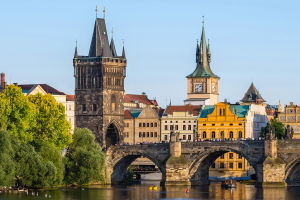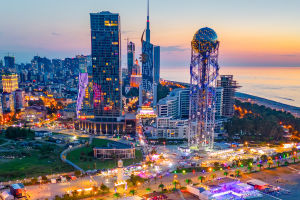Some places change your mood. Others change your plans. Iceland changed the way I see the world.
Before I landed in Reykjavik, I thought I understood what nature meant. I had seen mountain ranges in photos, watched documentaries about volcanoes, and read travel blogs describing the Northern Lights. But none of that prepared me for what Iceland actually feels like.
There's no other way to say it—this country makes you feel small, but in the best possible way. The landscape doesn't care who you are, what your job title is, or how many followers you have on social media. It simply exists. Raw, powerful, and deeply humbling.
1. Walking on a Glacier: Cold, Cracked, and Alive
One of the first places I visited was Sólheimajökull, a glacier in the south of Iceland. From a distance, it looked peaceful—almost like a frozen lake. But as I got closer, I saw deep crevasses, jagged ridges, and rivers of melting ice running beneath the surface.
Walking on it was like walking on a sleeping giant. You could hear occasional cracks beneath your feet, subtle but real. It made me realize how the most powerful forces on Earth often move quietly, with no need to announce themselves.
🎫 Glacier Hike Cost: ~11,000 ISK (around $80)
🕒 Tour Duration: 2.5–3 hours (with gear and guide included)
2. Watching a Volcano Sleep—Then Roar
My timing in Iceland was pure luck: the Fagradalsfjall volcano had recently erupted, and parts of the cooled lava field were open to visitors. As we hiked toward it, I could smell sulfur in the air and feel a strange warmth radiating from the rocks. The lava was black, twisted, and sharp—like something forged in another dimension.
Standing on the edge of the cooled flow, I had two conflicting thoughts at once:
1—This is stunning and 2—This is terrifying.
That's the thing about volcanoes. They remind you that Earth is not just a place we live on—it's a living system. A breathing, burning force that shaped everything beneath our feet.
🎫 Hiking Cost: Free, but guided tours ~9,000 ISK ($65)
🕒 Best Time to Visit: Late afternoon for sunset + cooling lava views
3. The Northern Lights: Silence Painted in the Sky
I'll be honest: I cried the first time I saw the aurora borealis. Not big dramatic tears, but that quiet, grateful kind. We were standing in complete darkness near Lake Mývatn when the sky began to shift—greens, purples, and blues danced like curtains in the wind.
There was no sound. No explanation. Just light appearing where it shouldn't be.
It reminded me that some of the most beautiful things in the world happen with zero warning. And they don't last forever. That's what makes them magic.
🎫 Cost: Free (self-guided), tours available from 7,000 ISK (~$50)
🕒 Best Time to See: September to March, 10 PM – 2 AM
4. Waterfalls That Don't Apologize
Iceland has so many waterfalls that locals have names for even the small ones. But Seljalandsfoss and Skógafoss are two that left me breathless—literally. The force of the water is so intense you can feel it in your chest.
Seljalandsfoss allows you to walk behind the fall itself. And when you do, you hear the sound of crashing water from inside the cave, bouncing off the rock walls like ancient thunder.
Skógafoss, on the other hand, is all about power. You stand near it, soaked and speechless. There's no sign saying "take off your headphones," but you do anyway. You just listen. And you remember what loud used to mean before the city redefined it.
🎫 Cost: Free
🕒 Access: 24/7, but best during daylight hour
Nature Changes You, Whether You Notice or Not
At some point during my trip—maybe it was during a 5-hour drive with nothing but lava fields on both sides—I realized something had shifted in me. I was less impatient. Less worried about messages, schedules, or news.
Because when you're in Iceland, your eyes are constantly busy just watching the world exist—glaciers melting drop by drop, waterfalls crashing with the weight of centuries, Northern Lights flickering like the sky is rewriting its own rules.
What Can Nature Teach You?
Iceland didn't change my life overnight. But it gave me something I didn't know I needed—a renewed respect for nature's quiet power. The kind that doesn't beg for attention but demands it once you're close enough.
If you ever get the chance to go, don't just chase the photos. Sit beside a waterfall for 10 minutes. Walk slowly on the glacier. Wait patiently for the lights to appear.
Because nature, when you really let it in, has a way of reminding you: you are part of something much, much bigger.


